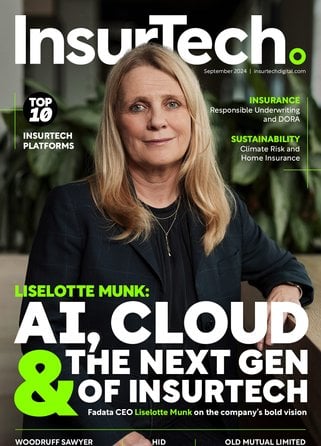Insurers Face Modelling Challenges Amid Regulatory Shifts

Insurance companies are adapting their modelling approaches as global regulations and climate disclosure requirements evolve.
The changes come as firms implement new systems following the introduction of IFRS 17, the international accounting standard for insurance contracts, which sets requirements for how insurers report insurance contracts in their financial statements.
John Bowers, Actuarial Product Director at RNA Analytics, a provider of actuarial modelling software, reflects on the transformation of insurance risk assessment. “The digital transformation has been profound – across the entire insurance ecosystem,” he says.
Regulatory Compliance and Model Evolution
The implementation of new regulatory frameworks requires insurers to update their modelling capabilities. Recent iterations of Solvency II, the European Union's directive that harmonises insurance regulation, have prompted changes in both EU member states and the UK.
“Tools must continue to be flexible enough to address the shifting goals of regulators around the globe,” says John, pointing to developments in Japan where the Japan Insurance Capital Standard (J-ICS) continues to evolve under the Financial Services Agency's oversight.
The post-implementation phase of IFRS 17 has begun to demonstrate results. “The operational savings and strategic advantages will become clear, delivering measurable value and long-term dividends,” Bowers notes.
These changes come as remote and digital work practices, which expanded during the pandemic, have become standard across the sector.
Climate Risk and Nature-Related Disclosures
The insurance sector faces climate-related risks in both assets and liabilities. Property, casualty and life insurers must monitor climate developments as they affect investment portfolios and insurance claims.
“When it comes to climate change, insurers face a unique risk profile, being exposed to climate-related risks on both sides of the balance sheet,” John explains. This dual exposure has led to new requirements for risk assessment and reporting.
The Taskforce on Nature-related Financial Disclosures (TNFD) Framework introduces new requirements for 2025. The framework, which builds on the Task Force on Climate-related Financial Disclosures, requires firms to assess their impact on nature and how nature affects their financial performance.
“Double materiality requires organisations to disclose both how nature may impact their immediate financial performance, as well as how their operations impact nature,” John says. This framework demands novel approaches to modelling techniques.
Technology Integration
The adoption of artificial intelligence and data science tools presents opportunities for actuaries while creating new risk considerations.
AI systems, which use algorithms to analyse data and make predictions, require new approaches to risk modelling as data sources expand.
“Both AI and data science open up a world of opportunities for actuaries in all fields,” says John. “The constantly increasing sources of data and ever-expanding capacity of AI and data science tools bring about major shifts in risk profiles and appetites.”
Operational Transformation
The operational efficiencies driven by the global digital transformation will yield benefits for insurance firms in 2025. These extend to companies facing regulatory pressures and those with fewer compliance demands.
As modelling techniques and solutions evolve to address regulatory changes, insurers continue to adapt their systems. The insurance ecosystem has a role in ensuring innovation aligns with ethics and societal well-being.
Regulators, insurers and technology providers will collaborate to address new challenges as the industry moves toward a more sustainable future. “To address ever-widening and more complex regulatory demands, only tools that are developed in such a way that they can quickly respond to trends will suffice,” John concludes.
Make sure you check out the latest industry news and insights at InsurTech and be part of the conversation at our global conference series, FinTech LIVE.
Discover all our upcoming events and secure your tickets today.
InsurTech is a BizClik brand
Featured Articles
Pipe’s underwriting model sees 98% offer acceptance globally, expanding its reach to new markets with seamless financial solutions
Absa Life implements Sapiens suite across funeral business as foundation for AI-driven expansion
Markel's fintech insurance chief warns of rising synthetic fraud as 79% of UK firms lose £500K+, with new regulations shifting liability to providers




